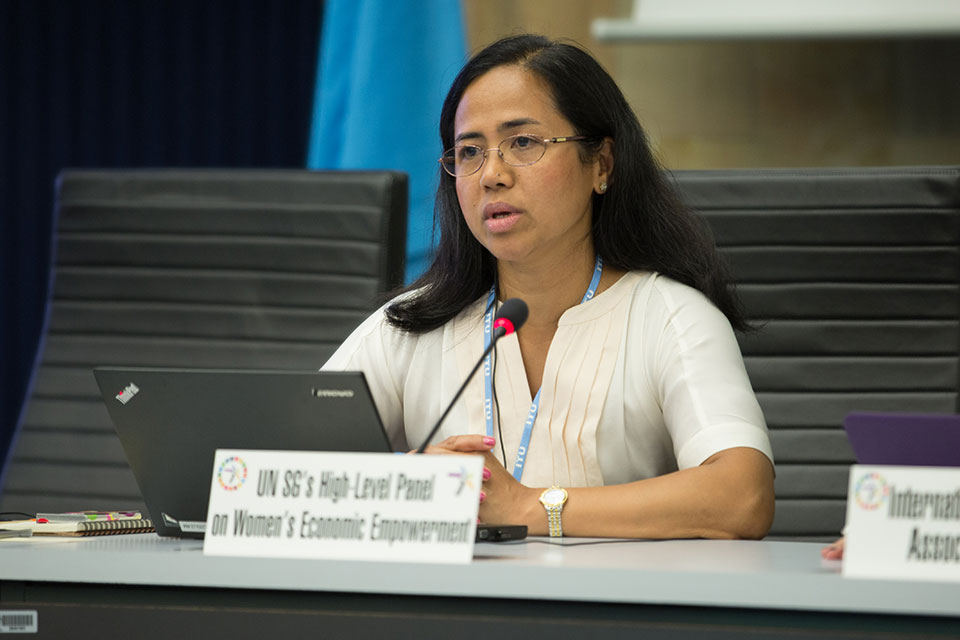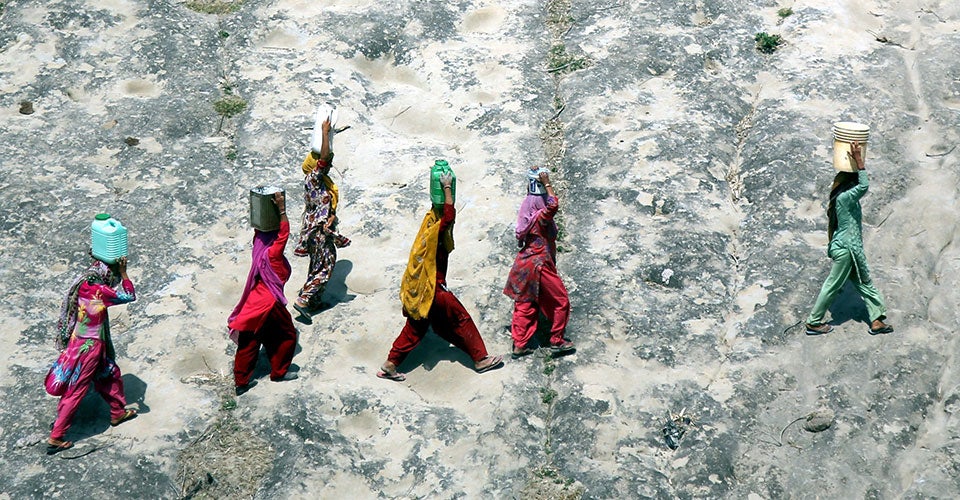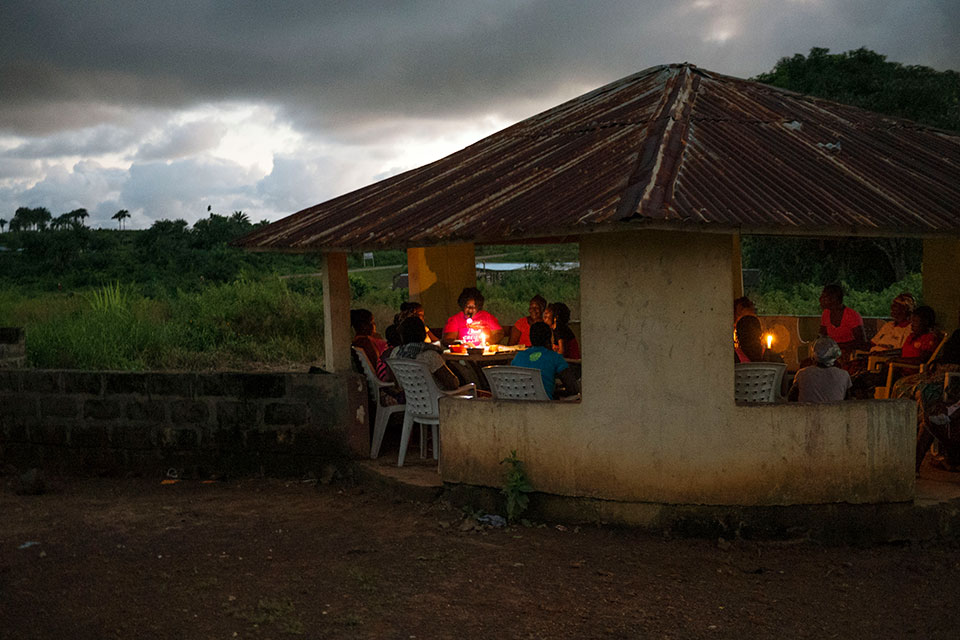Take five: UN Women at the global climate conference, COP 24
Date:

Verona Collantes is an Intergovernmental Specialist with UN Women and the focal point for the three Rio Conventions – climate change, desertification and biodiversity. She works with governments, UN entities and other non-government partners to ensure that intergovernmental processes and their outcomes incorporate a gender perspective. Dedicated to improving women’s participation in global processes, Ms. Collantes works to ensure that women, including grassroots, indigenous and young women are represented in intergovernmental fora.
World leaders are convening in Poland for the global climate conference, COP 24. What is this conference about?
COP 24 is the informal name for the 24th session of the Conference of the Parties to the UN Framework Convention on Climate Change. COP 24 brings together world leaders to agree on the full implementation of the Paris Agreement and raise ambition. A critical goal of the Paris Agreement is to limit global temperature rise to well below 2 degrees Celsius to avoid the worst effects of climate change. The Paris Agreement is a UN-facilitated intergovernmental agreement that tackles climate change mitigation, adaptation, technology, capacity-building and finance, among others.
This year, among other issues, COP 24 takes stock of Parties’ contribution to the so-called “pre-2020 implementation and ambition” – which speaks of how countries are contributing to the mitigation goal by reducing their carbon emissions and through better forest, land and water management. All of these initiatives have different implications for women and men.
What are the important conversations and decisions regarding gender equality and climate action happening at COP 24?
At COP 24, Parties to the Convention discuss and mandate the way forward on the review of the Lima Work Programme on gender and the Gender Action Plan.
The Paris Agreement Work Programme, also called the “rulebook”, is important from a gender perspective as it provides specifics on the implementation of the various mandates contained in the Paris Agreement, including the nationally determined contributions (NDCs) or policies and measures governments aim to implement as a contribution to global efforts to reduce greenhouse gas emissions, the adaptation communications and the transparency framework—all of which have gender-specific references in the most current draft being negotiated.
Also at COP 24, UN Women is raising the visibility of gender issues through supporting Parties initiatives such as the “For All Coalition”, led by the Government of Costa Rica, and the Declaration on Gender Equality and Climate Change, initiated by Peru. The For All Coalition aims to support countries and negotiating groups to strengthen the reflection of a gender perspective in intergovernmental discussions, and human rights issues within the climate context and to garner broader support for gender-specific and human rights commitments and action across the different multilateral environmental agreements. The Declaration on Gender Equality and Climate Change is a renewal of commitment, and at the same time a call to action to support the momentum in the push for gender equality considerations in the UNFCCC process. Initiated by Peru, it also gained the endorsement of Belgium, Chile, Costa Rica, Finland, France, Luxembourg, The Netherlands and Sweden.
At COP 23 (December 2017), Parties to the United Nations Framework Convention on Climate Change (UNFCCC) adopted the first UNFCCC Gender Action Plan (GAP). What is the significance of having this Plan ?
The adoption of the first UNFCCC Gender Action Plan was an important effort to prioritize specific activities to implement 60 or more decisions with gender-specific mandates adopted by Parties to the Convention in earlier COPs. The Gender Action Plan provides a clearly defined timeframe, responsible actors and mandated activities to track progress or lack thereof. UN Women supported Member States in drafting the Plan.
One year into the implementation of the two-year GAP, there have been some major gains, such as strengthened understanding of gender issues by chairs and members of constituted bodies in the various thematic areas of the Convention; the appointment of national gender and climate change focal points in 36 countries; more capacity-building events for women delegates and capacity-building on gender mainstreaming in the implementation of the Convention and the Paris Agreement for all delegates.
More importantly, the UNFCCC GAP has become a model for the two other Rio Conventions—biodiversity and desertification—in the development and/or revision of their own GAPs.
What are some of the main gender equality concerns when it comes to climate action today?
There is in general an agreement that women and men experience the impact of climate change differently, and adaptation and mitigation solutions need to account for these differences.
For instance, in disaster situations, women and girls are often the last to eat or be rescued; face greater health and safety risks as water and sanitation systems become compromised; and take on increased domestic and care work as resources disappear.
While there are more than enough projects and solutions developed and invented by women that contribute to limiting greenhouse gas emissions and increasing the resilience of communities in the face of climate change challenges, there are no dedicated and sustainable ways to build on this work to benefit other women and communities. These initiatives are not captured or studied to build evidence that can inform gender-responsive policies and programmes at the national or local levels.
The main implication of these challenges is that the voice, agency and leadership of women in climate action do not receive full attention at the global level. Similarly, decisions adopted at the global level do not necessarily translate into actions on the ground that benefit the women and girls
There is also a problem of access to and sustainability of financing for women-led projects. Many of the available financing mechanisms like the Green Climate Fund and the Global Environmental Facility invite very large projects involving millions or billions of dollars while women-led climate projects are of smaller scale. There is a need to strengthen mechanisms for women’s organizations to access available financial resources.
How is UN Women working on climate action and gender equality?
UN Women works on multiple fronts to promote climate action and gender equality. Part of our work is normative, at the policy level—for instance, we are working to ensure intergovernmental processes such as the UNFCCC, the High-level Political Forum, resolutions at the UN General Assembly and the Human Rights Council, etc. address the needs and potential of both women and men when it comes to climate-related policies and initiatives.
We are also supporting efforts to build the capacity of government officials and other stakeholders so that they can integrate gender concerns into national climate policies and programmes. As the expert on gender issues, we produce many research papers, tools and guidance notes to support the implementation of gender-responsive policies and programmes.
To promote the leadership and agency of women climate champions, UN Women supports women, including young women, from government and grassroots communities to participate in meetings and negotiations on climate change.
We are also working to boost women’s leadership in climate action through programmes on the ground. For example, UN Women supported rural Liberian women to train as solar engineers at Barefoot College in India, and they now work to promote renewable solar energy and reduce dependency on fossil fuels. And in Viet Nam, UN Women partnered with the Viet Nam Women’s Union to train women on disaster preparedness and disaster risk reduction so they can work to protect their communities.

